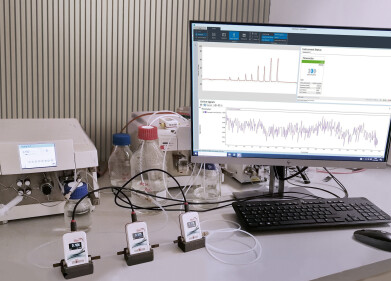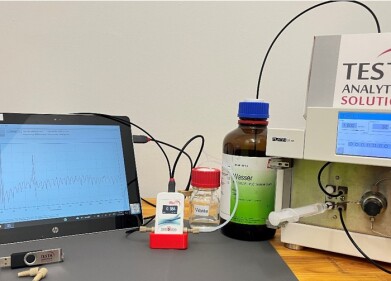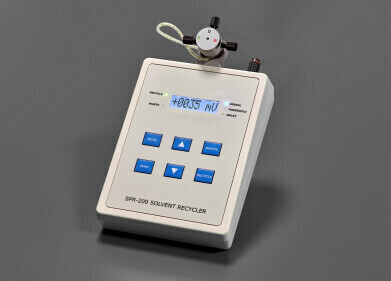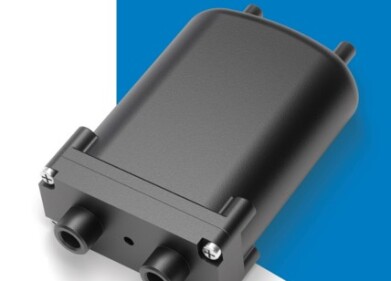Chromatography
Women in Physics – Marie Curie
Oct 31 2018
For most people, the first female scientist that comes to mind is Marie Curie. She pioneered medical physics and changed the lives of millions of people.
In our 6-part series taking a look at inspirational women in physics, Marie Curie could not be left out. Her work has influenced so many others and continues to do great things, through the Marie Curie charity.
Keep reading to discover more about yet another fascinating woman that proves physics wasn’t ‘invented and built by men’…
Challenging start to life
Unlike the other women we have looked at in this series, Marie was born into a poor family, raised only by her father after her mother died. Marie (born Maria) lived in Warsaw and was the youngest of 5 children.
Unable to support her education, or that of her siblings, Marie became a governess to earn money to financially support her sister, Bronislawa, whilst she studied medicine in Paris.
Two years later, when Bronislawa had established a life in France, Marie joined her and was supported by her sister whilst she studied physics, chemistry and maths at the University of Paris.
Working as a tutor during the evenings, she just about managed to get by. Although, she did suffer with the cold winters and would often faint from hunger.
Radioactive studies
After marrying French scientist Pierre Curie in 1895, Marie and her husband became research workers at the School of Chemistry and Physics in Paris. The Curies started pioneering work into uranium rays, recently discovered by Professor Henri Becquerel.
By examining pitchblende, a mineral that contains uranium ore, Marie and Pierre discovered 2 new chemical elements – polonium and radium. The Curies published their evidence supporting the existence of the new elements but couldn’t prove it completely because pitchblende is expensive, and they had run out of samples.
So, Marie contacted a factory in Austria that removed uranium from pitchblende and sold the waste product for much less. With this highly radioactive product in abundance, Marie processed the pitchblende to extract radium.
Both Marie and Pierre suffered for their work, experiencing symptoms of radiation sickness. Their ignorance of the risks led to them often having raw, inflamed hands because they were constantly handling radioactive material.
Nobel Prize win
In 1903, Marie and Pierre won the Nobel Prize for Physics alongside Henri Becquerel for their work on radioactivity. Marie also passed her doctorate thesis in physics this same year.
Shortly after their Nobel Prize victory, the Curies were struck by tragedy. In 1906, Pierre was killed in a street accident after being knocked down by a horse and cart.
This tragic accident, however, didn’t dull Marie’s work spirit and she continued her pioneering work. Her work was recognised again in 1911, when she became the first and only person to win the Nobel Prize in both Physics and Chemistry.
Marie’s legacy
During WW1, Marie worked on the front line, developing mobile x-ray units – ‘Petits Curies’ – to diagnose and save wounded soldiers. The technology used in the Petits Curies is still used today in fluoroscopy machines in hospitals.
Her work has gone on to change the lives of many, with her findings being used to produce life-saving cancer treatments. There is also a major UK charity – Marie Curie – helping and supporting people living with a terminal illness, providing them and their families with care and guidance.
Women in physics
Prompted by Professor Alessandro Strumia’s recent presentation, during which he suggested that physics was ‘invented and built by men’, Labmate’s 6-part series has highlighted just a few key female figures that have shaped modern physics.
Despite the difficulties these 5 women have faced during their careers, they have persevered in the face of discrimination. As Marie Curie once said, ‘nothing in life is to be feared; it is only to be understood’. We must not fear or weaken the success of others, only learn from it.
Want to find out more about the ever-changing world of science? Take a look at the article, ‘Visiting the 15th International Symposium on Hyphenated Techniques in Chromatography and Separation Technology (HTC-15)’
Digital Edition
Lab Asia 31.6 Dec 2024
December 2024
Chromatography Articles - Sustainable chromatography: Embracing software for greener methods Mass Spectrometry & Spectroscopy Articles - Solving industry challenges for phosphorus containi...
View all digital editions
Events
Jan 22 2025 Tokyo, Japan
Jan 22 2025 Birmingham, UK
Jan 25 2025 San Diego, CA, USA
Jan 27 2025 Dubai, UAE
Jan 29 2025 Tokyo, Japan



















